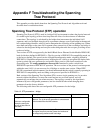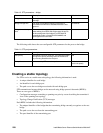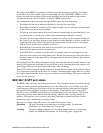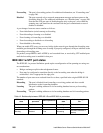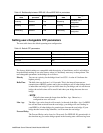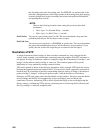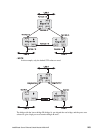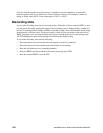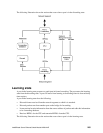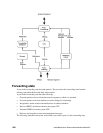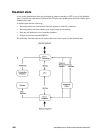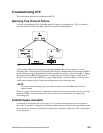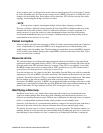264 Intel® Blade Server Ethernet Switch Module IXM5414E
Note also that the example network topology is intended to provide redundancy to protect the
network against a link or port failure, not a switch failure or removal. For example, a failure of
bridge A would isolate LAN 1 from connecting to LAN 2 or LAN 3.
Discarding state
A port in the discarding state does not forward packets. When the switch is started, a BPDU is sent
to each port in the bridge, putting these ports in the discarding state. A bridge initially assumes it is
the root; it then begins the exchange of BPDUs with other bridges. This will determine which bridge
in the network is the best choice for the root bridge. If there is only one bridge on the network, no
BPDU exchange occurs, the forward delay timer expires, and the ports move to the learning state.
All STP enabled ports enter the discarding state following the bridge startup.
A port in the discarding state does the following:
• Discards packets received from the network segment to which it is attached.
• Discards packets sent from another port on the bridge for forwarding.
• Does not add addresses to its forwarding database.
• Receives BPDUs and directs them to the central processing unit (CPU).
• Does not transmit BPDUs from the CPU.




